
When the new Congress convenes Friday, there will be fewer people of color in the delegation than in recent years.
The 119th Congress will have 136 people of color, four fewer than the previous U.S. House and Senate, which was the most ethnically and racially diverse in history. However, this year’s delegation consists of several firsts, including the first time an openly transgender woman has served in Congress.

When it comes to parity between congressional representatives and the populations they serve, Illinois and Ohio are the only states with the same percentage of people of color in both. People of color make up 42% of Illinois’ population and representation; Ohio is 24%.
In most states, people of color are underrepresented in the House and Senate
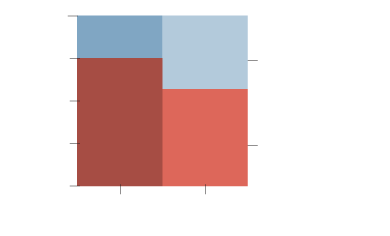
Share of people of color in congress compared to the population that they represent
100%
25%
43%
75
NONWHITE
50
75%
57%
25
WHITE
0
CONGRESS
POPULATION
In the United States, 57% of the population are white and 43% are nonwhite, according to 2023 census data. In the House and Senate, 399 out of 535 representatives are white. A quarter are nonwhite.
From most people of color in Congress to least
States where the share of people of color in Congress matches their populations

Ill.
Ohio
8/19 seats
4/17

Ohio
Ill
8/19 seats
4/17

Ohio
Ill
4/17
8/19 seats
States where the share of people of color in congress is lower than their populations
States where the share of people of color in Congress is lower than their populations
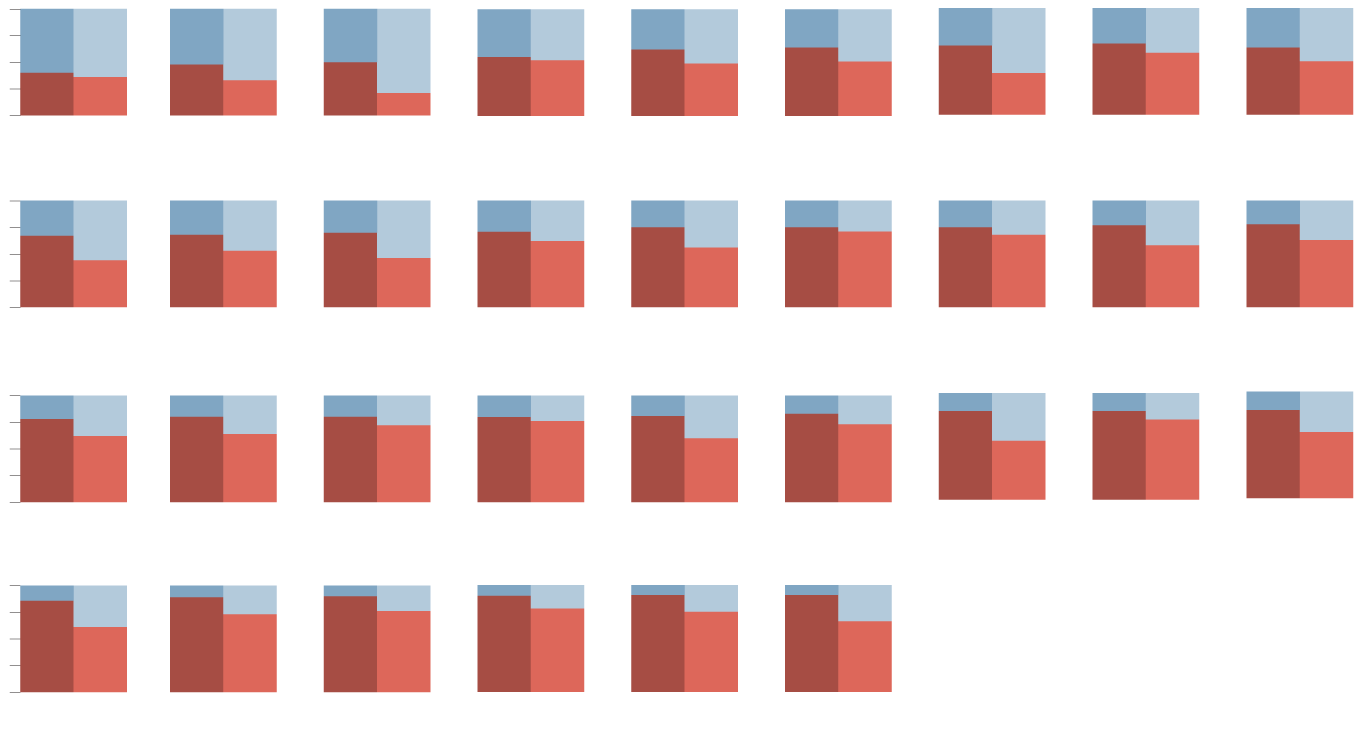
Del.
N.M.
Calif.
Hawaii
Ariz
Ga.
N.J.
Texas
Fla.
3/5
28/54
2/4
5/11
6/16
5/14
14/40
1/3
10/30
Nev.
N.Y.
Md.
Okla.
La.
Ore.
R.I.
Va.
Ala.
2/6
9/28
3/10
2/7
2/8
2/8
1/4
3/13
2/9
S.C.
Colo.
Mich.
Mo.
N.C.
Kan.
Miss.
Utah
Wash.
2/9
2/10
3/15
2/10
3/16
1/6
1/6
1/6
2/12
Conn.
Pa.
Minn.
Wis.
Ind.
Mass.
1/7
2/19
1/10
1/10
1/11
1/11
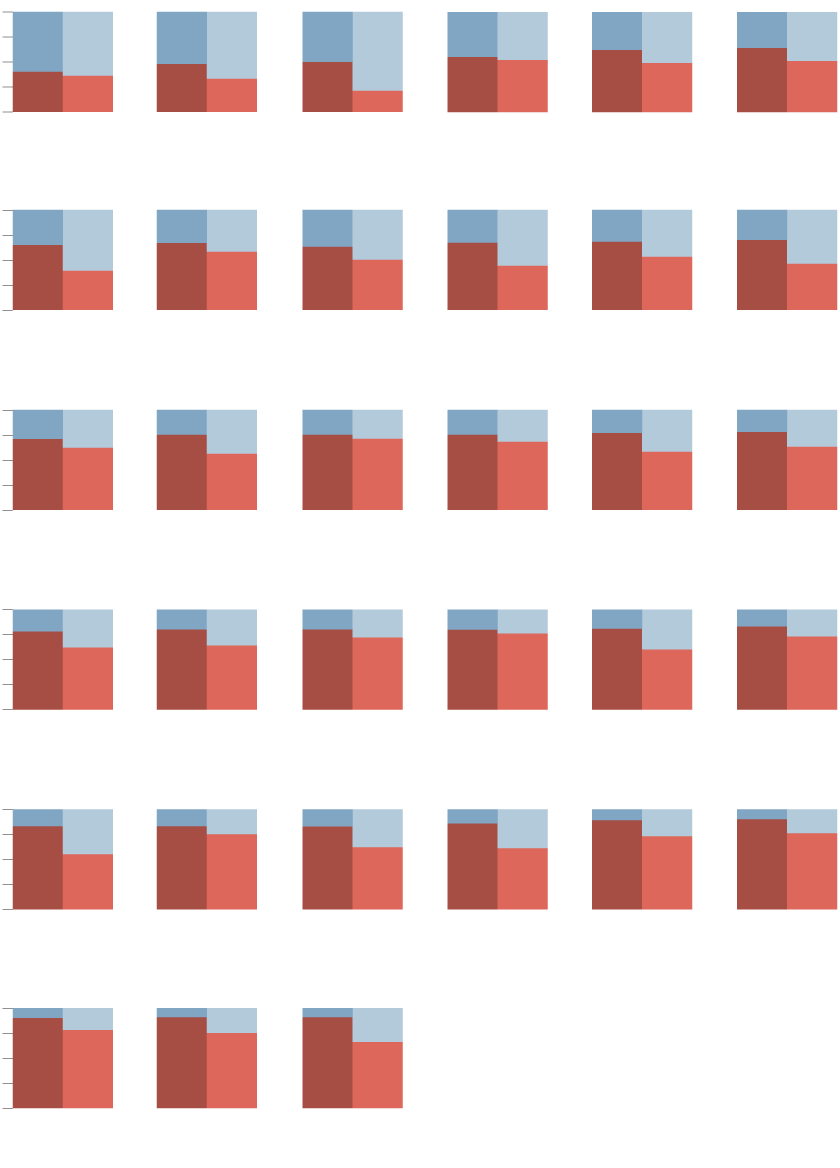
N.M.
Calif.
Hawaii
Ariz
Ga.
N.J.
3/5
28/54
2/4
5/11
6/16
5/14
N.Y.
Md.
Texas
Del.
Fla.
Nev.
14/40
1/3
10/30
2/6
9/28
3/10
La.
R.I.
Va.
Ala.
Okla.
Ore.
2/7
2/8
2/8
1/4
3/13
2/9
S.C.
Colo.
Mich.
Mo.
N.C.
Kan.
2/9
2/10
3/15
2/10
3/16
1/6
Miss.
Utah
Wash.
Conn.
Pa.
Minn.
1/6
1/6
2/12
1/7
2/19
1/10
Ind.
Wis.
Mass.
1/10
1/11
1/11

N.M.
Calif.
Hawaii
Ariz
3/5
28/54
2/4
5/11
Ga.
N.J.
Texas
Del.
6/16
5/14
14/40
1/3
Fla.
Nev.
N.Y.
Md.
10/30
2/6
9/28
3/10
Okla.
La.
Ore.
R.I.
2/7
2/8
2/8
1/4
Va.
Ala.
S.C.
Colo.
3/13
2/9
2/9
2/10
Mich.
Mo.
N.C.
Kan.
3/15
2/10
3/16
1/6
Miss.
Utah
Wash.
Conn.
1/6
1/6
2/12
1/7
Pa.
Minn.
Wis.
Ind.
2/19
1/10
1/10
1/11
Mass.
1/11
States with no representatives of color in Congress

Alaska
Ark.
Idaho
Iowa
Ky.
Maine
Mont.
Neb.
N.H.
0/3
0/6
0/4
0/6
0/8
0/4
0/4
0/5
0/4
N.D.
S.D.
Tenn.
W.Va.
Wyo.
Vt.
0/3
0/3
0/11
0/3
0/4
0/3
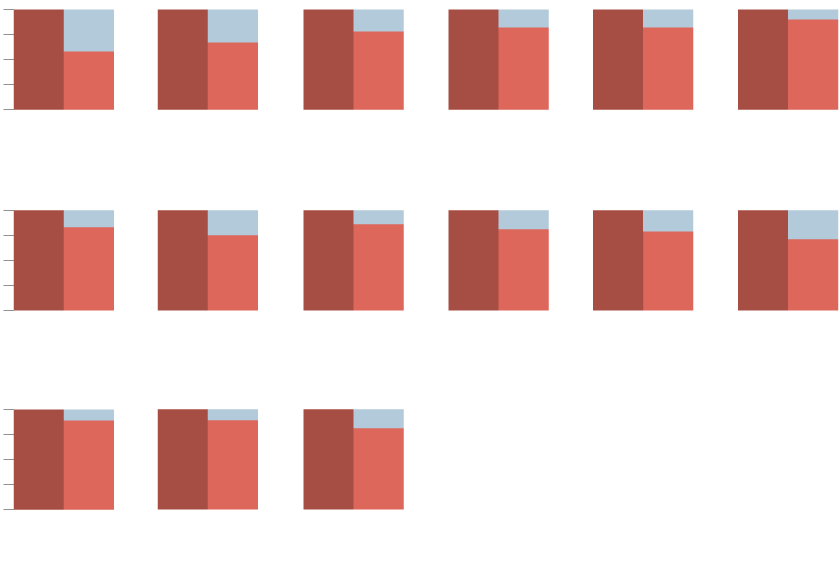
States with no representatives of color in Congress
Alaska
Ark.
Idaho
Iowa
Ky.
Maine
0/3
0/6
0/4
0/6
0/8
0/4
Mont.
Neb.
N.H.
N.D.
S.D.
Tenn.
0/3
0/3
0/11
0/4
0/5
0/4
Vt.
W.Va.
Wyo.
0/3
0/4
0/3
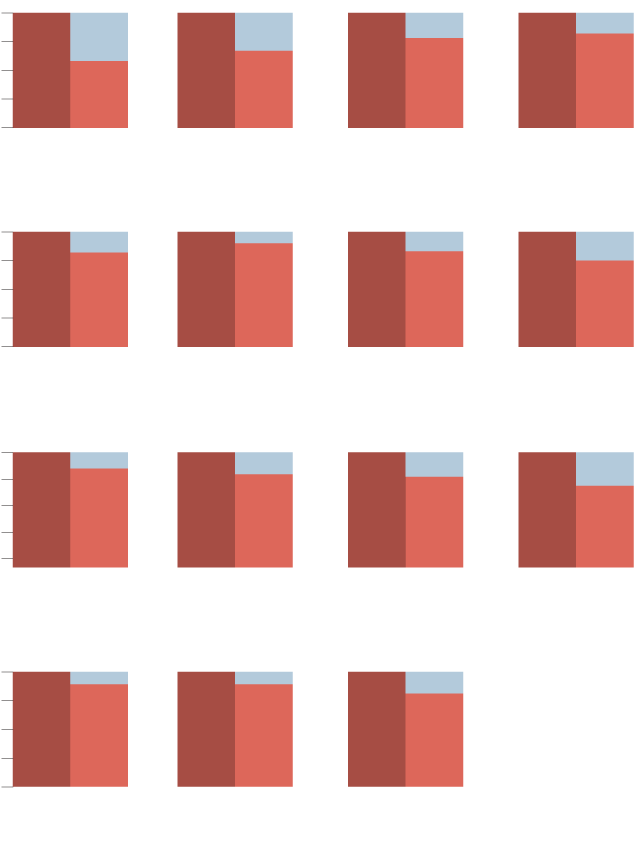
Alaska
Ark.
Idaho
Iowa
0/3
0/6
0/4
0/6
Ky.
Maine
Mont.
Neb.
0/8
0/4
0/4
0/5
N.H.
N.D.
S.D.
Tenn.
0/3
0/3
0/11
0/4
Vt.
W.Va.
Wyo.
0/3
0/4
0/3
LOS ANGELES TIMES
Several other states are close to parity. New Mexico’s population is 64% nonwhite and 36% white. In the House and Senate, two out of five representatives are white, while 40% are nonwhite. Arizona’s representation is 55% white compared with 52% in its population.
Sixty-seven percent of California’s population and 52% of its representatives are people of color. The state’s delegation includes the highest number of Asian Americans and Pacific Islanders with 10 members.
Less than a third of the 119th Congress are women. In the new Congress, six states have no female House or Senate members. Seven states have higher female representation in Congress than in their population.
U.S. Rep. Sarah McBride (D-Del.) made history in November by becoming the first transgender member of Congress, four years after she became the first openly transgender state senator in the United States. Her victory represents a significant step forward for LGBTQ+ representation in government.

“My service is a testament to the fair-mindedness of Delawareans who this November demonstrated what I have seen throughout my life: that they judge candidates based on their ideas, not their identities,” McBride said. “I know how much this news would have meant to me as a young person growing up, worried that the heart of this country was simply not big enough to love someone like me, to have seen an out trans person get elected to federal office.”
North Dakota also had a milestone with Republican Julie Fedorchak becoming the first woman to represent the state in the U.S. House of Representatives. Fedorchak is also the first freshman in 14 years to be seated on the House Energy and Commerce Committee.
“What’s most important to me is how I use this,” Fedorchak told The Times. “I’m really excited to join the Republican women, a majority of them have great backgrounds and are really serious about good policy.”
Mississippi is the only state yet to send a woman to the House.
Women make up at least 50% of congressional representation in 11 states
Seven states have 50% or more women represented in the House and Senate. Five states are represented by 100% men.
From most women in Congress to least
Higher women representation
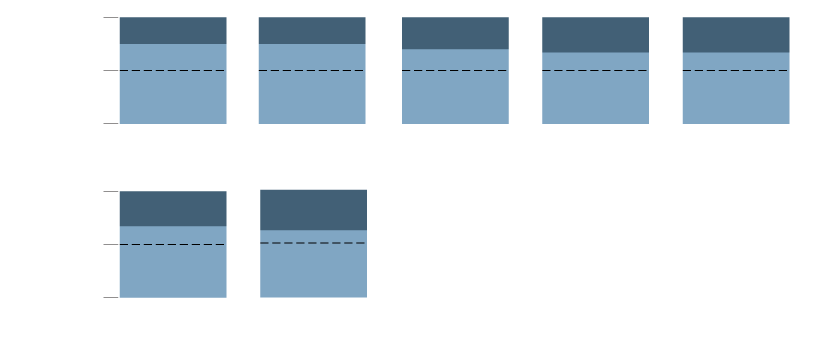
100%
50%
0%
Wash.
N.H.
Minn.
Nev.
Del.
9/12 seats
3/4
7/10
4/6
2/3
Ore.
Wyo.
2/3
5/8

100%
50%
0%
Wash.
N.H.
Minn.
Nev.
Del.
Wyo.
Ore.
3/4
7/10
4/6
2/3
2/3
5/8
9/12 seats
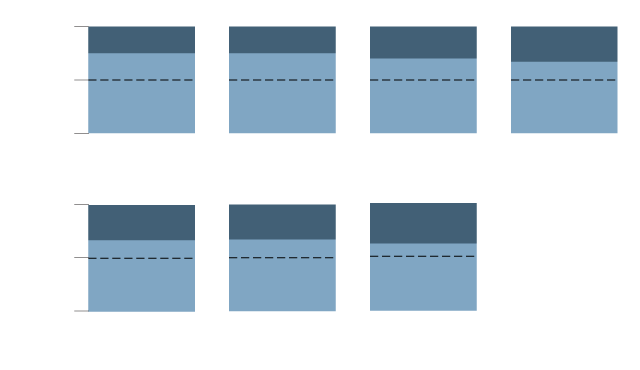
100%
50%
0%
Wash.
N.H.
Minn.
Nev.
9/12 seats
3/4
7/10
4/6
Del.
Wyo.
Ore.
2/3
2/3
5/8
Equal representation

Iowa
Hawaii
Maine
W.Va.
3/6
2/4
2/4
2/4

Iowa
Hawaii
Maine
W.Va.
2/4
3/6
2/4
2/4

Iowa
Hawaii
Maine
W.Va.
3/6
2/4
2/4
2/4
Some women representation
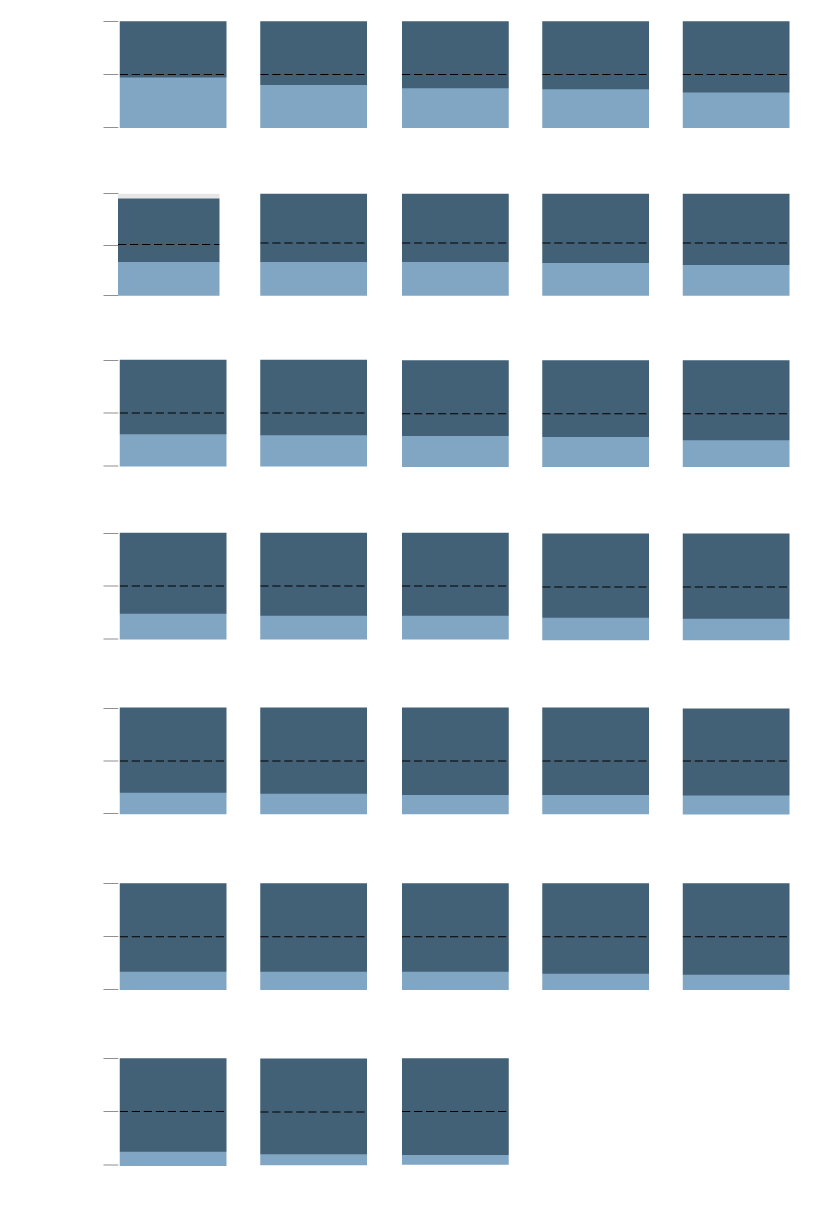
Mich.
N.M.
III.
Mass.
Alaska
7/15
2/5
7/19
4/11
1/3
Fla.
N.D.
Vt.
N.Y.
Colo.
10/30
1/3
1/3
9/28
3/10
Md.
Conn.
N.J.
Calif.
N.C.
3/10
2/7
4/14
15/54
4/16
Ohio
Ala.
S.C.
Pa.
Neb.
4/17
2/9
2/9
4/19
1/5
Wis.
Ga.
Ind.
Tenn.
Texas
2/10
3/16
2/11
2/11
7/40
Kan.
Miss.
Utah
Va.
Okla.
1/6
1/6
1/6
2/13
1/7
La.
Ariz.
Mo.
1/8
1/10
1/11
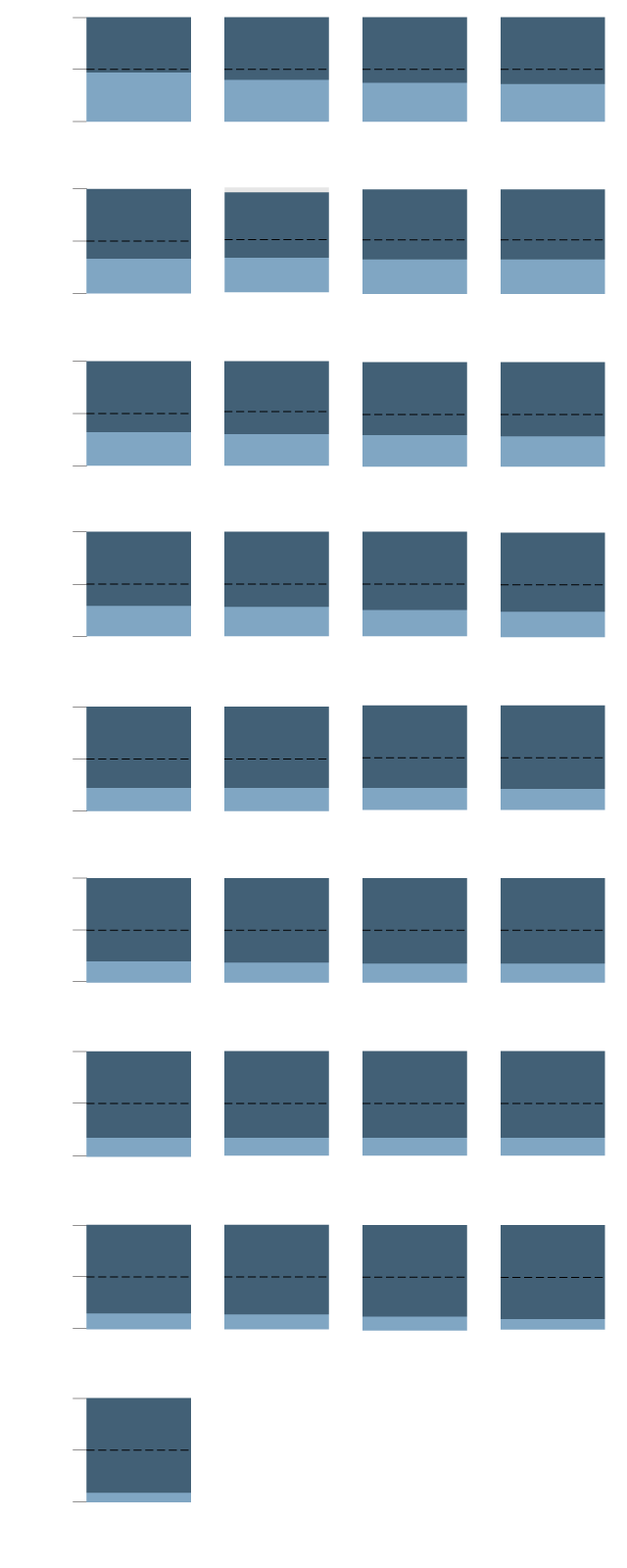
Mich.
N.M.
III.
Mass.
7/15
2/5
7/19
4/11
Alaska
Fla.
N.D.
Vt.
1/3
10/30
1/3
1/3
N.Y.
Colo.
Md.
Conn.
9/28
3/10
3/10
2/7
N.J.
Calif.
N.C.
Ohio
15/54
4/16
4/17
4/14
Ala.
S.C.
Pa.
Neb.
2/9
4/19
1/5
2/9
Wis.
Ga.
Ind.
Tenn.
2/10
3/16
2/11
2/11
Texas
Kan.
Miss.
Utah
7/40
1/6
1/6
1/6
Va.
Okla.
La.
Mo.
1/10
2/13
1/7
1/8
Ariz.
1/11
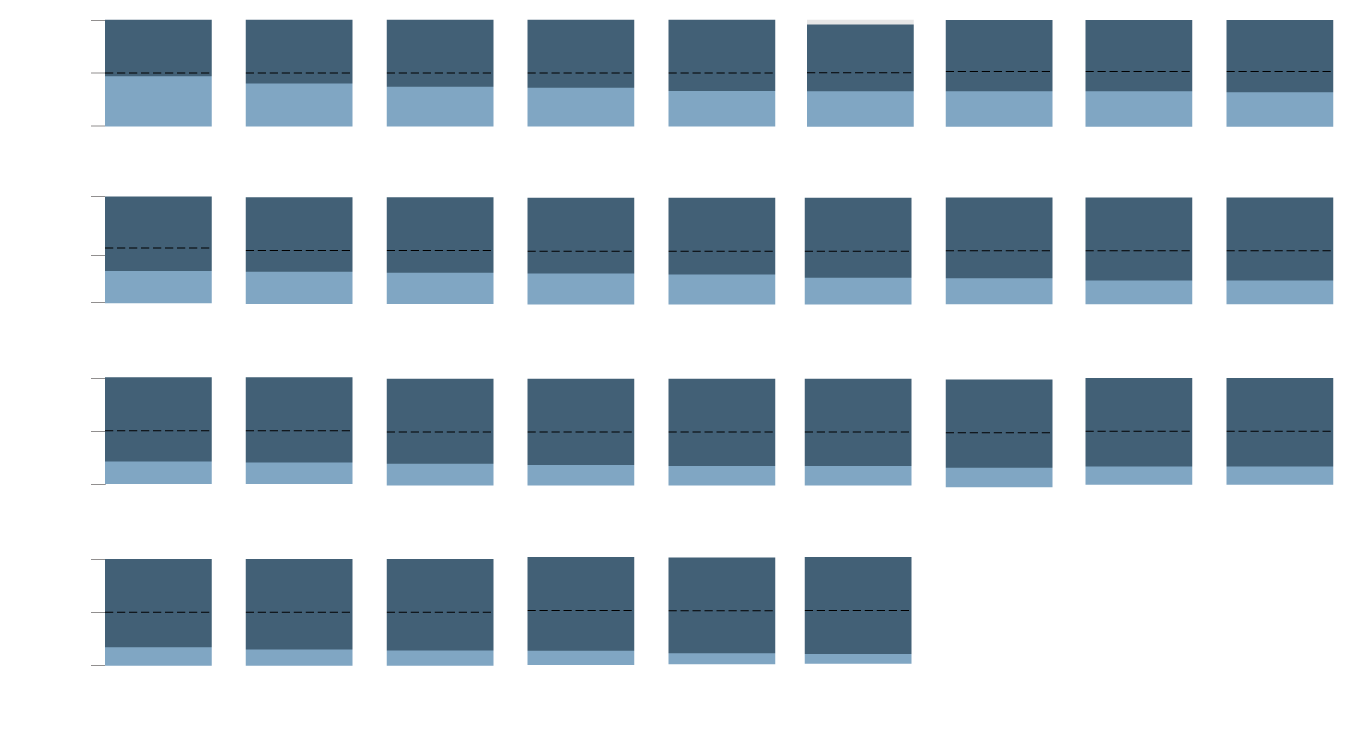
Mich.
N.M.
III.
Mass.
Alaska
Fla.
N.D.
Vt.
N.Y.
7/15
2/5
7/19
4/11
1/3
10/30
1/3
1/3
9/28
Colo.
Md.
Conn.
N.J.
Calif.
N.C.
Ohio
Ala.
S.C.
3/10
3/10
2/7
4/14
15/54
4/16
4/17
2/9
2/9
Pa.
Neb.
Wis.
Ga.
Ind.
Tenn.
Texas
Kan.
Miss.
1/6
1/6
4/19
1/5
2/10
3/16
2/11
2/11
7/40
Utah
Va.
Okla.
La.
Mo.
Ariz.
1/6
2/13
1/7
1/8
1/10
1/11
No women representation
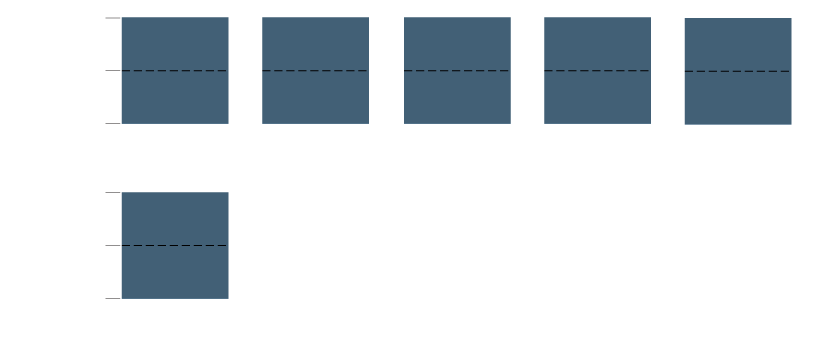
Ark.
Idaho
Ky.
Mont.
R.I.
0/6
0/4
0/8
0/4
0/4
S.D.
0/3

Ark.
Idaho
Ky.
Mont.
0/6
0/4
0/8
0/4
R.I.
S.D.
0/4
0/3

Ark.
Idaho
Ky.
Mont.
R.I.
S.D.
0/4
0/8
0/4
0/4
0/6
0/3
LOS ANGELES TIMES
The elections of Sens. Angela Alsobrooks (D-Md.) and Lisa Blunt Rochester (D-Del.) mark the first time two Black women have served on the U.S. Senate simultaneously.

In 2023, the 118th Congress was the most ethnically and racially diverse U.S. House and Senate in history. U.S. Rep. Maxwell Alejandro Frost (D-Fla.) was the first member of Generation Z to walk the congressional corridors. Trailblazers like Democrats U.S. Rep. Becca Balint, Vermont’s first woman and out LGBTQ+ congressperson, and U.S. Rep. Summer Lee, Pennsylvania’s first Black woman in Congress, shattered long-standing glass ceilings.

New Jersey is the only state with an all-minority Senate delegation in the country.
Newly elected Sen. Andy Kim (D-N.J.) is the first Korean American in the Senate. Kim said that while he is proud to break barriers, he looks forward to the day when his role in Congress is no longer seen as groundbreaking or pioneering, but commonplace. The night he was sworn into Congress, Kim called his mother who was crying tears of joy.
“It was really powerful to see this moment, not just for my family but for what it means to Korean Americans, Asian Americans, and what it means to immigrant families,” Kim said. “Hopefully they can see a continuation of this American dream that has been a shared pursuit for so many different ethnic groups and communities.”